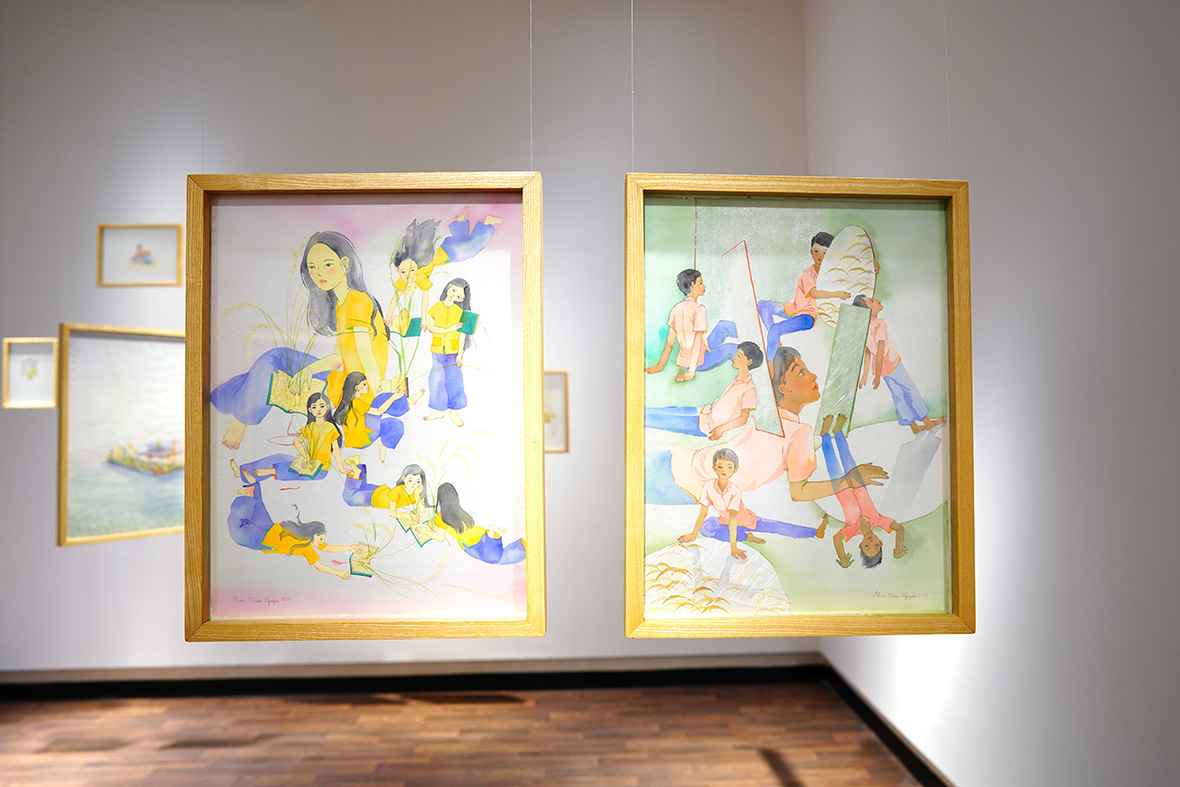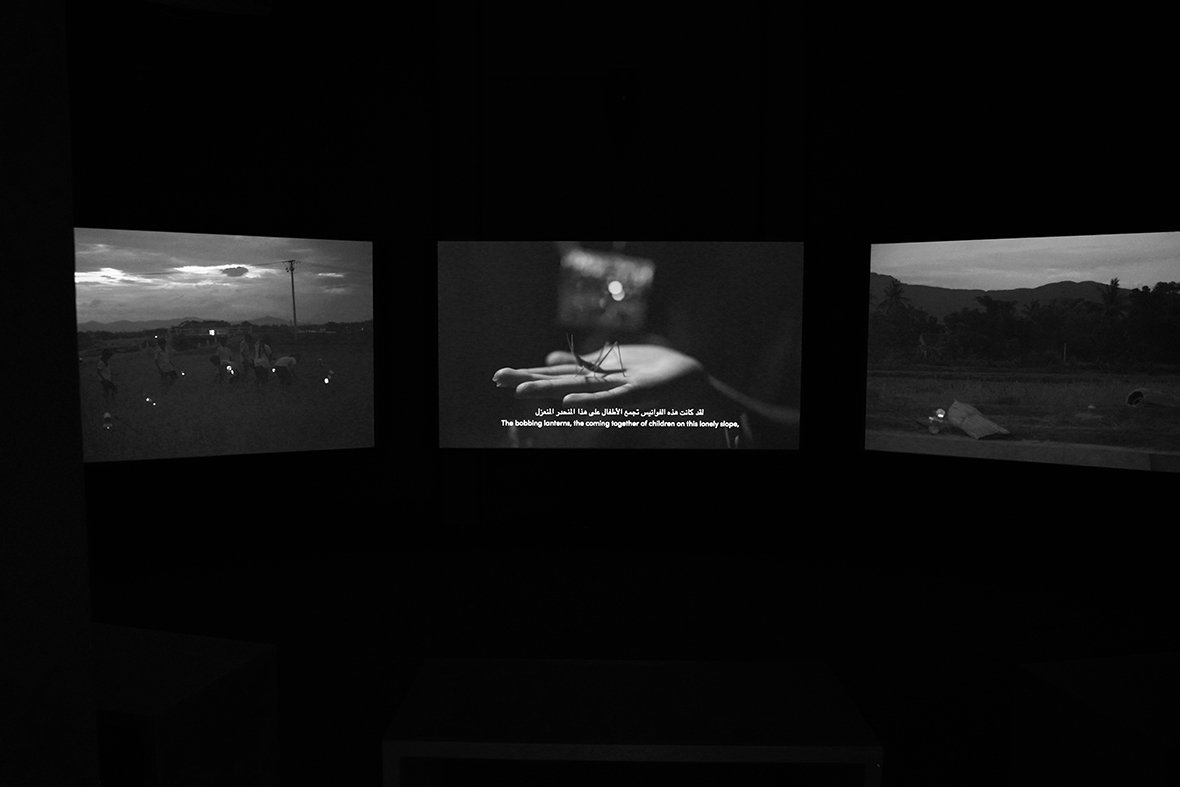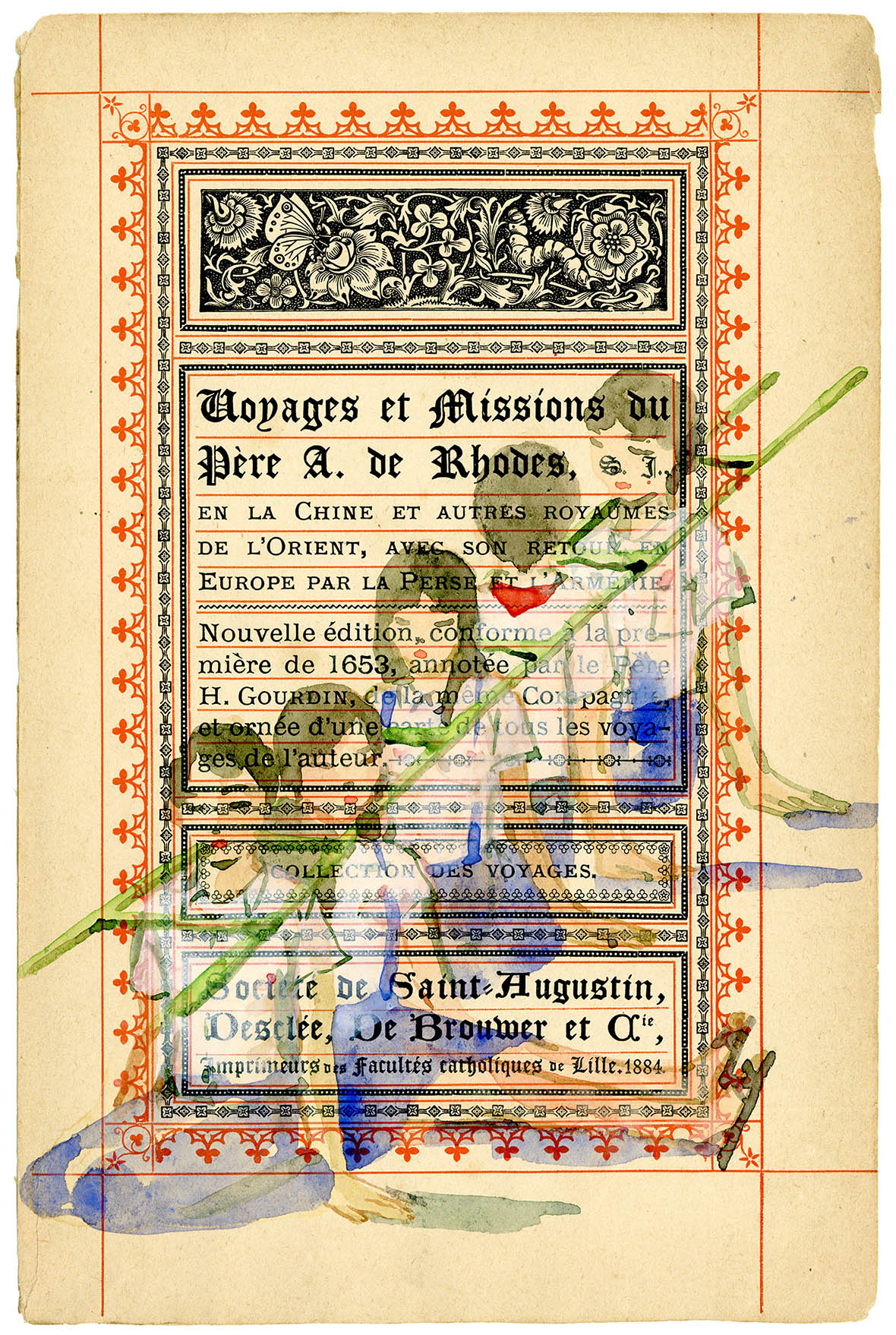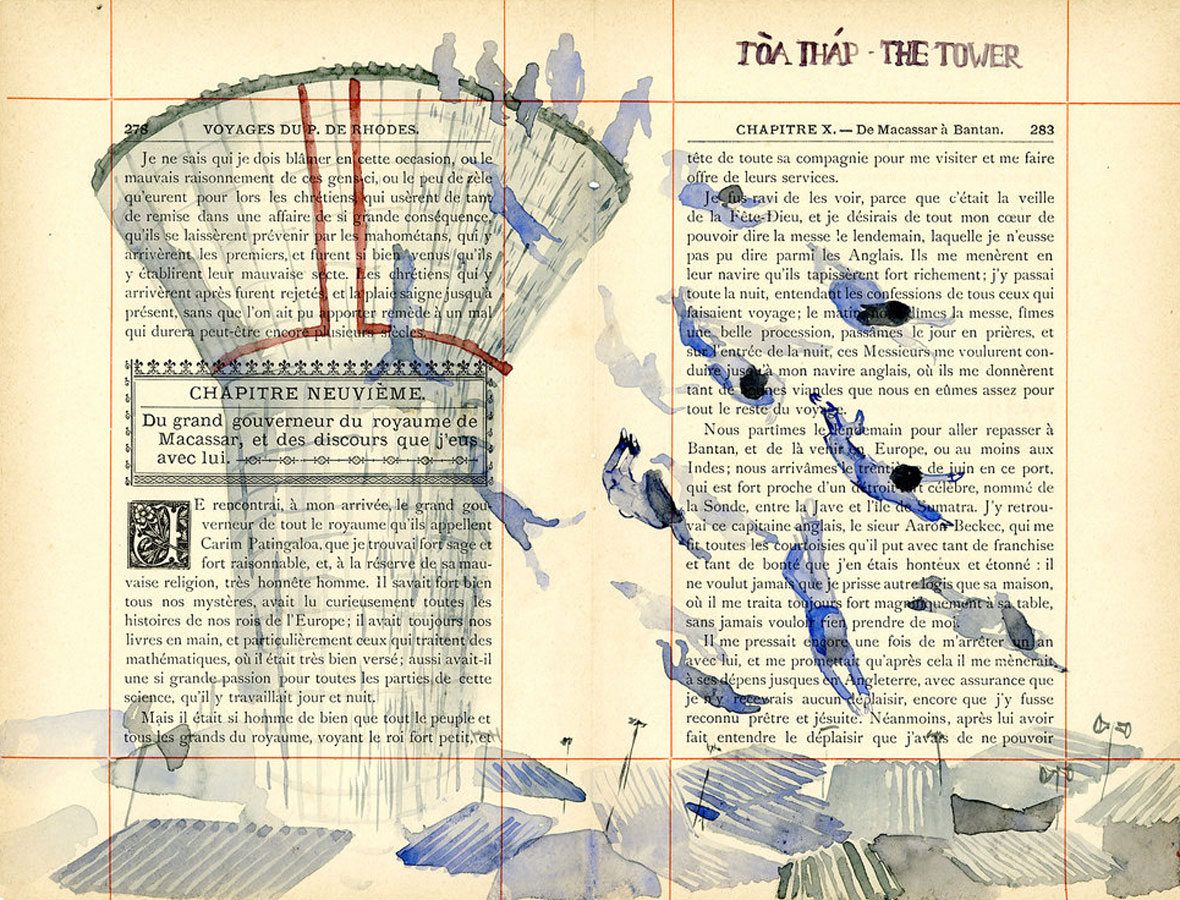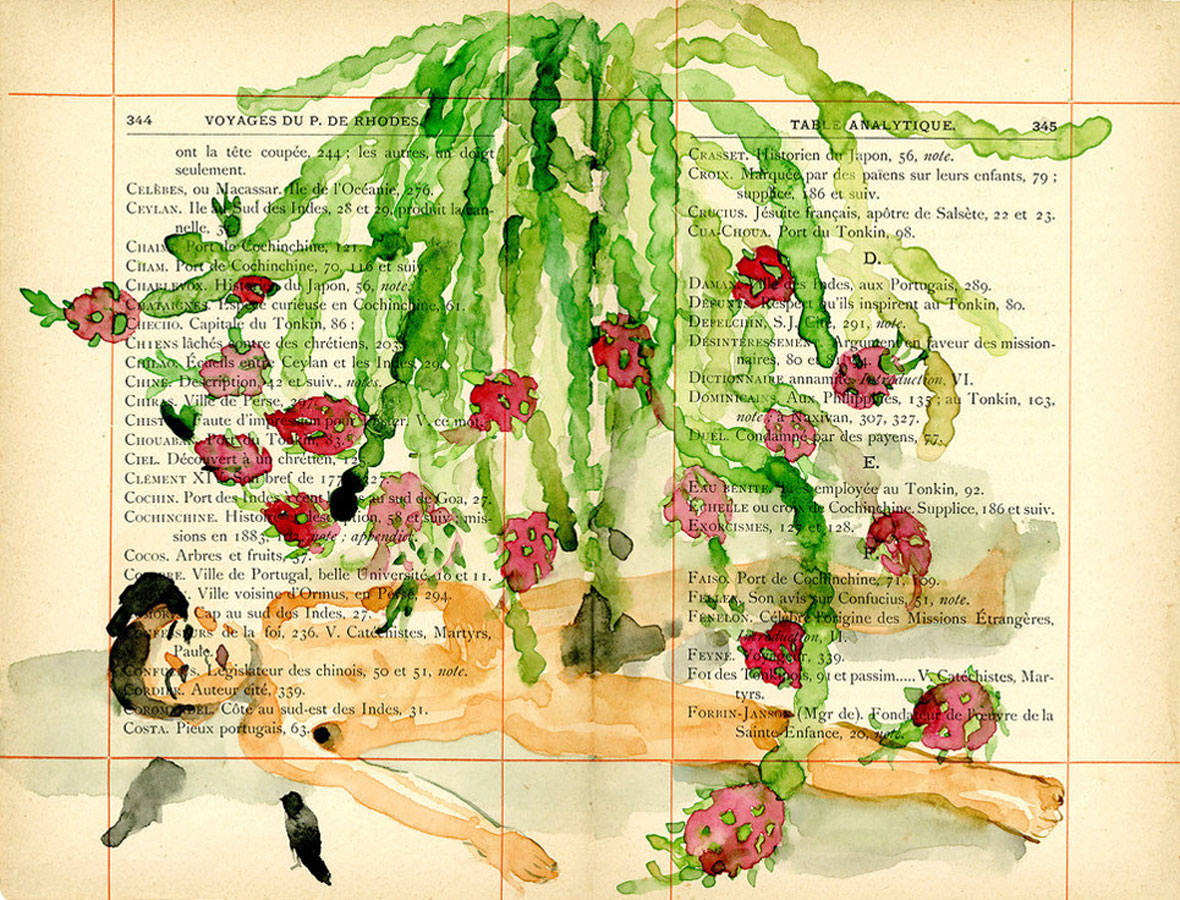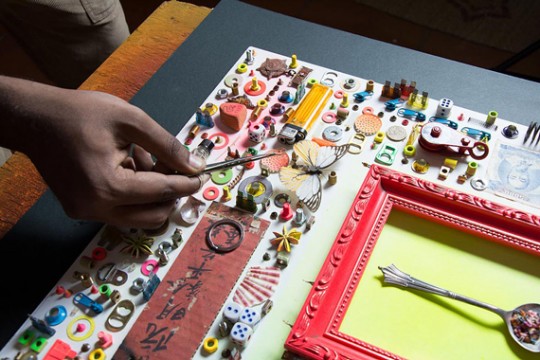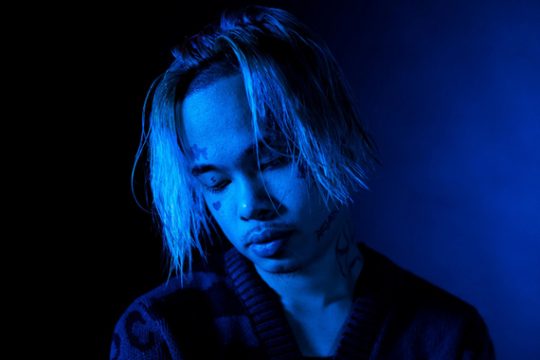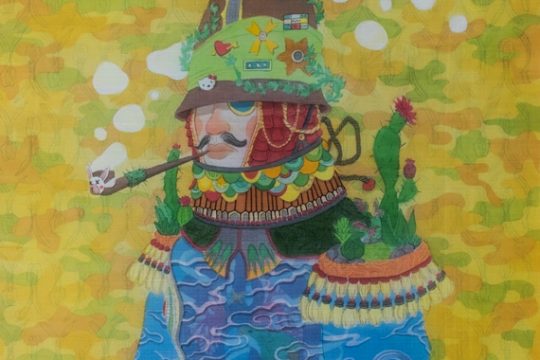
Phan Thảo Nguyên‘s works are challenging for young, international audiences. In this year’s Hugo Boss Asia Art Award show, held at the Rockbund Art Museum in Shanghai, Phan’s dense watercolors, curtains of jute stalks, and sombre, halting videos leave viewers with more questions than answers. What is she trying to say?
A multimedia artist who lives in Ho Chi Minh City, Phan creates pieces that are deeply engaged with Vietnam’s past, and some historical background is required if you want to make sense of her art.
对于年轻的、全球的观众来说,潘涛阮的作品并不好“看”。在这次外滩美术馆 HUGO BOSS ASIA 亚洲新锐艺术家大奖的展览中,你会看到氤氲的水彩、倒悬的黄麻杆、蹒跚踌躇的镜头……“她要表达什么?”你会问。
潘涛阮(Thao Nguyen Phan)是一位来自越南的多媒体艺术家,现居胡志明市。但让我们可以先抛开她的作品不谈。如果你想要解读作品,越南当地的近现代史就是绕不过去的“背书”。
Phan’s contribution to this year’s show is a mixed-media exhibition titled Mute Grain, a trilogy of works that uses video, photographs, paintings, and installation to tell of a historical tragedy little discussed outside Vietnam: the Red River Famine of 1944-45. During the Second World War, the Japanese army occupied Vietnam under the pretext of freeing it from colonial rule. To ensure supplies for the war effort, they forced farmers to grow jute, cotton, and other militarily useful crops instead of rice; the resulting famine killed perhaps more than a million people. “Years ago, I read a short prose piece titled Starved by To Hoai,” Phan says. “I was an adolescent, and the agony of this famine, compressed in a few printed pages, left a lasting impression on me.”
在第二次世界大战的 1940 到 1945 年间,日本军队打着“帮其摆脱法国殖民统治”的旗号重新支配越南,由于战争的需要,迫使当地人种植黄麻、棉花等可军用的植物,代替了稻米庄稼,导致了两百万人大饥荒。
这次为 HUGO BOSS ASIA 带来的“无声的谷粒”(Mute Grain)是一系列混合媒介作品。“几年前,我读过一篇 To Hoai 写的名为《饥饿者》的文章。对当时少年的我来说,这场饥荒的痛苦,被浓缩在几页印刷的书页里,给我留下了难以磨灭的印象。”潘涛阮说。而这最终酝酿成一系列作品“无声的谷粒”。
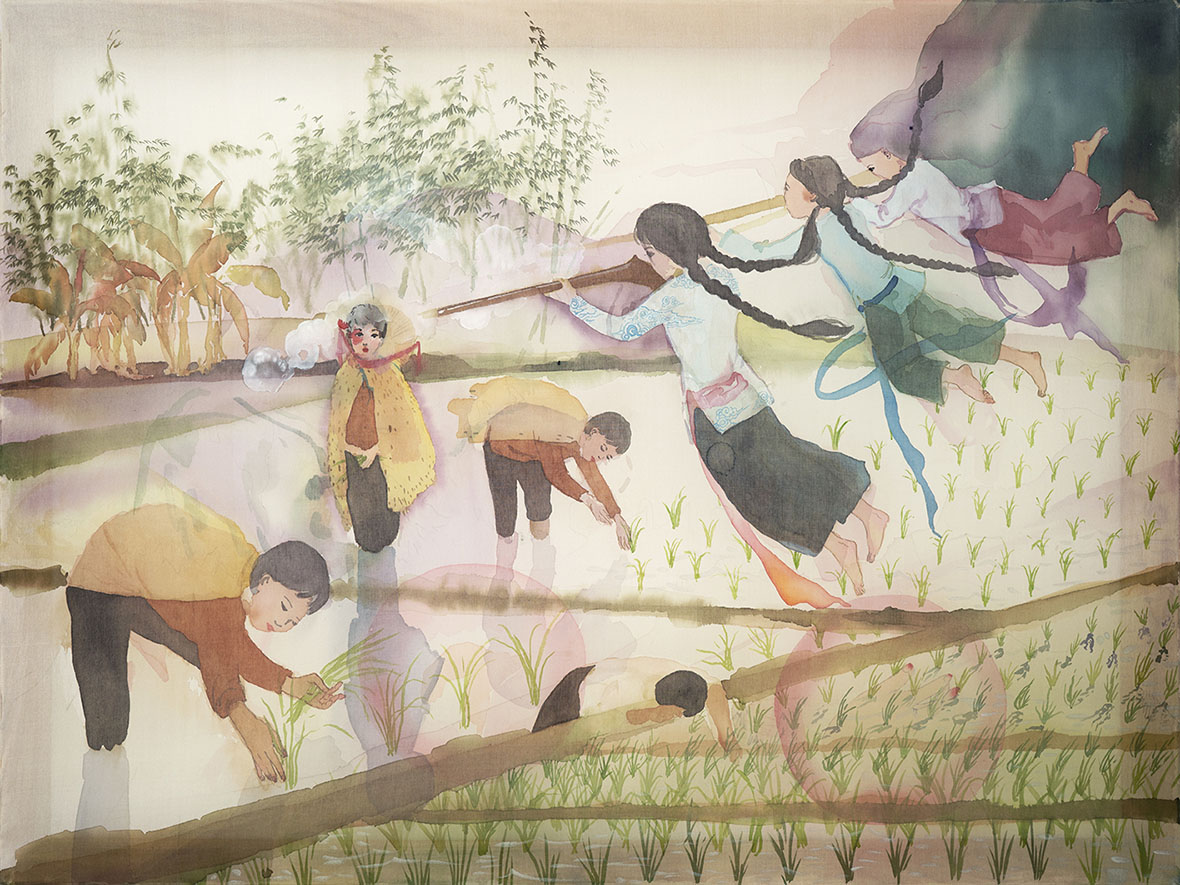
The centerpiece of Mute Grain is a three-channel video of the same name that tells the story of a dead young woman called August and her brother March. As March looks anxiously for his sister, unaware that she’s passed on to the spirit realm, August drifts between layers of time and space, searching for her place.
In Vietnam, which formerly relied on agriculture, “these are the poorest months of the year, when the new harvest is not ready and the rice and other food saved from previous seasons has already run out,” Phan explains. “March and August are a tenuous time in which farmers have to borrow money and rice and find other work to sustain their living.”
These two characters are also the protagonists of Dream of March and August, which is the second part of the exhibition. “While March looks in vain for the memories of his sister, they somehow meet in a dream-like world impossible to reconcile in reality,” she says.
《无声的谷粒》也是这次展出的同名三频影像的作品名,它讲述的故事始于一个名叫“八月”的少女之死,而哥哥“三月”则在现世中苦苦寻找少女的踪迹,殊不知“八月”却早已变成了幽灵,穿梭于层叠的时间和空间中,奔跑并追逐她的哥哥 “三月” 在现实中的足迹。
越南曾是一个以农业为主的国家,潘涛阮说,“三月和八月是一年中最困难的时期,新的收成还没有准备好,而从前几个季节结余的存粮业已消耗殆尽,农民们曾经不得不借钱和做兼工来维持生计。”
这两个悲情角色同时也是展览第二部分《三月和八月的梦乡(Dream of March and August)》的主人翁。她说:“虽然 ‘三月’ 透过记忆对妹妹的寻找看起来徒劳无功,但他们却以某种方式在无法变为现实的梦境世界中相遇。”

Phan’s third piece, No Jute Cloth for the Bones, an installation bridging the rooms containing the other two, likewise evokes the Japanese occupation of Vietnam, when jute was used to make burlap sacks. Every time someone walks through the installation, the jute stalks make a loud, crisp sound, as though cautioning viewers not to lose themselves in pretty illusions about the past, because behind them lies a cruel reality.
梦境与现实并不能交汇 —— 这样的故事概念也正如横亘与两个展厅之间的、最新的在地的装置《被剥皮的黄麻杆》(No Jute Cloth for the Bones),正是为了呼应日本占领越南、黄麻被用以制作布袋的那个时期而创作的。每次有人经过,黄麻杆便会乒乓作响,声音竟出奇地清脆,仿佛在提醒着过路的观众:莫要迷失在幻美的记忆里,因为残酷的现实紧随其后。
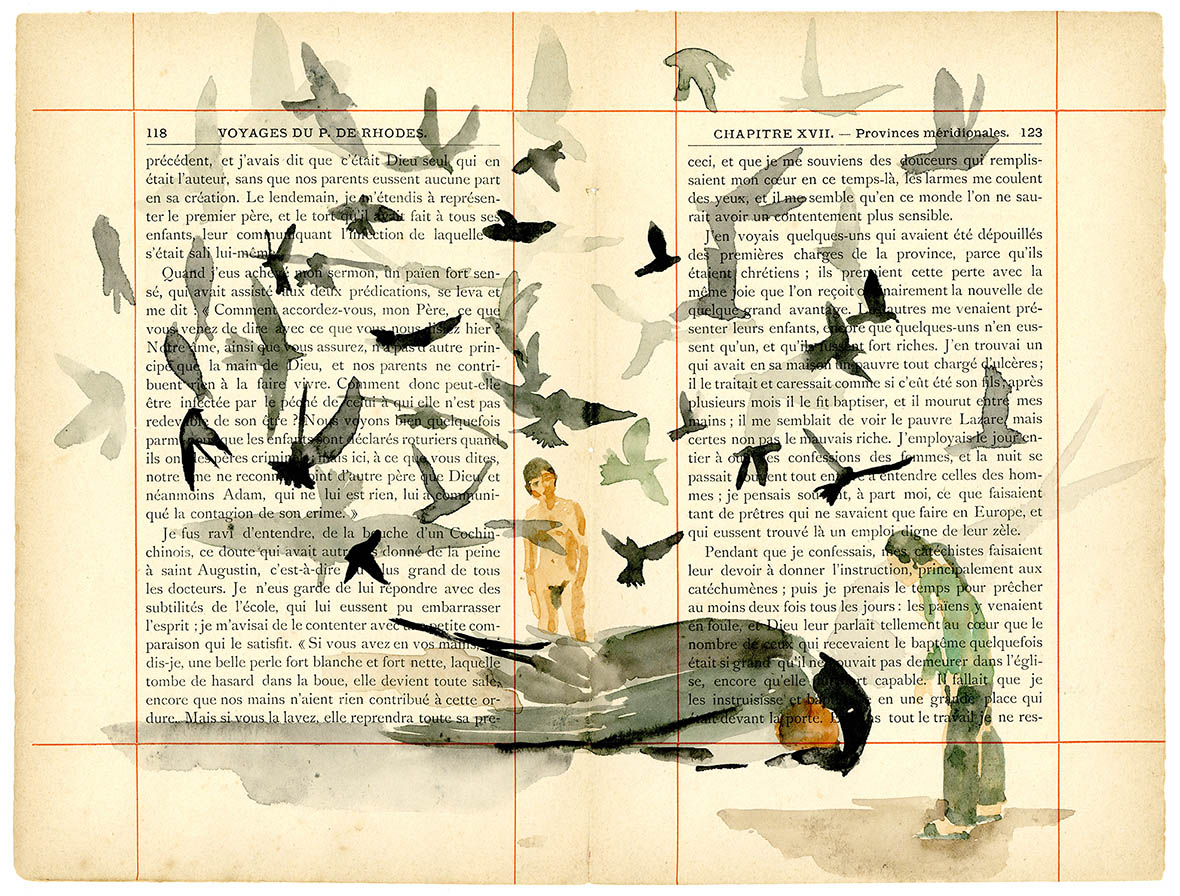
In a separate piece titled Voyages de Rhodes—part of her series Poetic Amnesia, not included in the Hugo Boss show—Phan traced her country’s history back even further. She created a series of watercolors on the pages of the book Voyages et Missions du Père Alexandre de Rhodes, which recounts the travels of a seventeenth-century French Jesuit missionary to Vietnam. The paintings show a young woman draped in a tiger skin, youths diving off of a water tower, and children banging drums in a jubilant marching band. It all seems innocent enough, but closer inspection reveals a sinister undertone: one boy is being swung around like a jump rope, others have tropical plants sprouting from between their legs, while still others kneel on the ground with a ladder around their necks like an oversized cangue. A painting with the word “white optimism” alludes, by way of a Vietnamese poet from the 1950s, both to socialist realism and to contemporary racism.
在她另一系列《诗意的失忆》(Poetic Amnesia)的分支作品《罗得之旅》(Voyages de Rhodes)中,潘涛阮则用一本法文旧书《Voyages et Missions du Père Alexandre de Rhodes》作为画布,书中讲述了讲述了一位17世纪法国耶稣会传教士前往越南的旅行。在画布上,你可以看到披着虎皮的少女;看到爬上水塔又纷纷跳下的孩子们;看到敲锣打鼓好似在庆祝的乐队……但仔细往后看,潘涛阮的画作却呈现出一种愈加险恶的基调:跪在地上拴木梯的少年、被当做长绳来甩动的少年、男孩们的性器官周围缠绕着热带植物。一副印有 “白色乐观主义” 大字的画布,则是间接地表达了社会主义的现实主义和当代人种偏见,这个词语来自上世纪五十年代越南诗人。
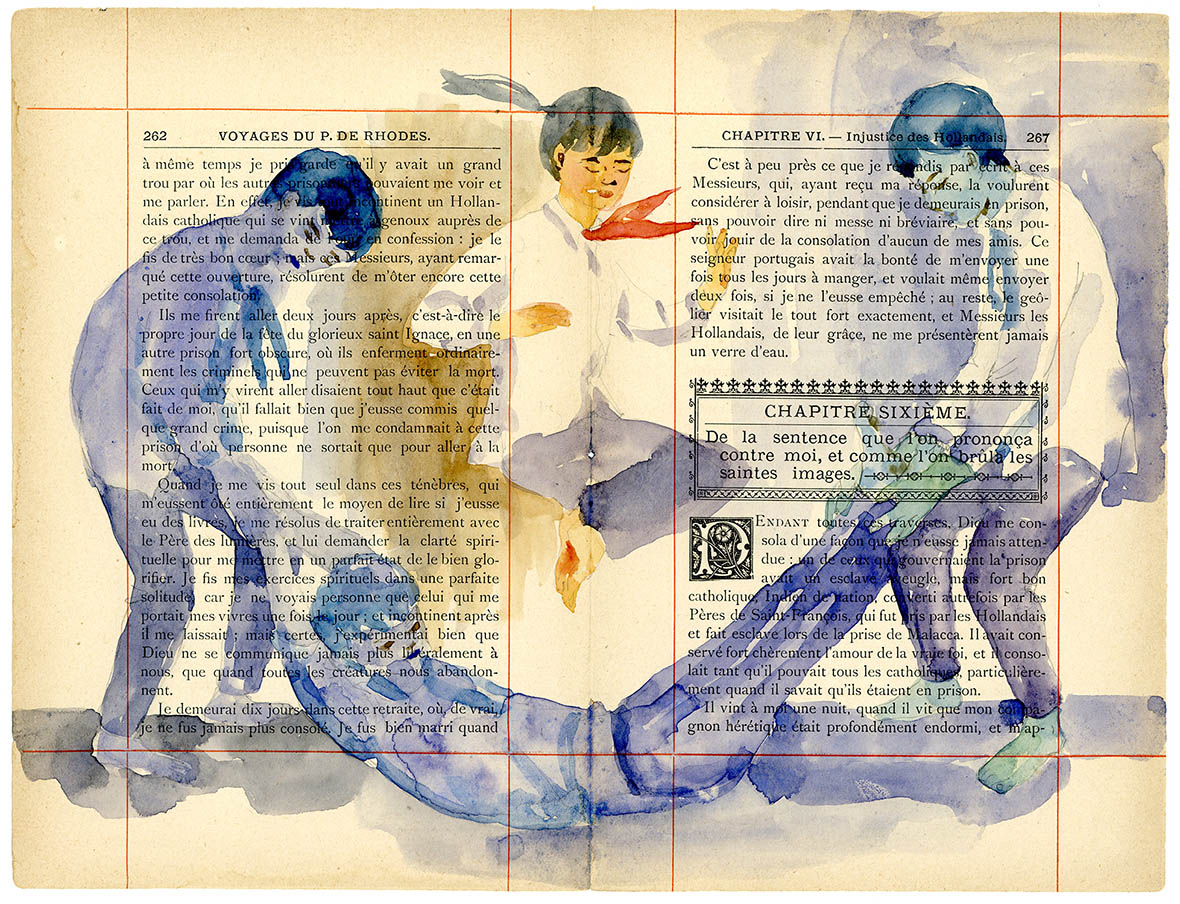
Through this sprawling work combining image and text, Phan delves into the modern history of Vietnam: its invasion by France in the nineteenth century, the impact of colonization and cultural imperialism, the replacement of a character-based writing system by the Latin script, and the gradual changes in people’s daily lives that followed.
这是个庞大的图像和文本集合作品,潘涛阮通过自己的方式去阐述着越南近现代的历史:十九世纪法国入侵并殖民越南,而收到当时殖民地的影响及文化侵占的需要,拉丁字母逐渐取代了本土文字 “喃字”。人们的日常生活,也随着西方列强的文化入侵而慢慢改变。

Phan uses art as a means to revisit episodes of Vietnam’s past that are intentionally ignored: agricultural labor, famine, the natural environment, and the changes wrought by humans.
Yet even stories that are lost to history never lack witnesses. What Phan does is retell them: her paintings, installations, and images all encourage viewers to delve into history, to read it, to engage with it. Her works are as haunting as ghosts, reminding us that the past is never gone.
潘涛阮以艺术的媒介重述了那些被人刻意漠视的过往:农耕、饥荒、大自然和人为改造的历史。
但事实上,湮没在历史长河里的故事,从来不乏亲历者。而潘涛阮所做的一切,是讲述它们。因而她的画、装置与影像,一直试图在鼓励观众走进它、阅读它、与它互动,这一切都能如幽灵般提醒着我们,过往的历史不会消散。
无法观看?前往优酷
Thảo-Nguyên Phan’s works are now on display at the Rockbund Art Museum in Shanghai, as part of the Hugo Boss Asia Art Award show curated by Billy Tang. Also on display are the works of the three other finalists: Hao Jingban (mainland China), Hsu Che-Yu (Taiwan), and Eisa Jocson (Philippines). Click here to purchase tickets.
Exhibition:
2019 Hugo Boss Asia Art Award
Dates:
October 18, 2019 to January 5, 2020
Address:
Shanghai Rockbund Art Museum
Huqiu Road, No. 20
Huangpu District, Shanghai
潘涛阮的作品目前正在上海外滩美术馆 HUGO BOSS ASIA 亚洲新锐艺术家大奖展览中呈现,展览由资深策展人曾明俊(Billy Tang)策划,同期展出的还有郝敬班(中国大陆)、许哲瑜(台湾地区)、艾萨·霍克森(Eisa Jocson,菲律宾)的作品。欢迎前往参观。
展览:
HUGO BOSS亚洲新锐艺术家大奖 2019
展期:
2019 年 10 月 18 日 ~ 2020 年 1 月 5 日
地址:
上海外滩美术馆
上海市黄浦区
虎丘路 20 号
Like our stories? Follow us on Facebook and Instagram.
Website: www.thaonguyenphan.com
Instagram: @thaonguyenphan_
Contributor: Chen Yuan
Images Courtesy of Shanghai Rockbund Museum & Phan Thảo Nguyên

